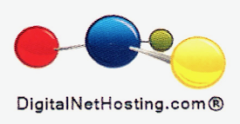SaaS – Approaches to Software as a Service
Software as a service (SaaS) is a software application delivery model where the vendor develops as well as operates the software application for use by its customers via the internet. Although SaaS is not limited to business applications only, it is typically considered an economical way for businesses to gain the same benefits of commercially licensed, internally operated software, without taking on the associated complexity and high initial cost that would normally go with purchasing software.
The SaaS model is well suited to many types of software. This is important since most customers may have little interest or capability in software operation, but do have considerable computing requirements. For example some applications such as Customer Relations Management, Accounting and Email, Video Conferencing as well as Human Resources are just a tip of the iceberg when looking at the original markets showing success in the SaaS field.
Although there were earlier applications delivered over the internet, the distinction between SaaS and those earlier applications is that SaaS solutions were developed exclusively to power web technologies such as the browser. The term "SaaS" was coined by John Koenig for the SDForum Software as a Service Conference in March of 2005 and has become the industry adopted reference term, generally replacing the earlier terms "On-Demand" and "ASP" (Application Service Provider).
SaaS – Reasons to adopt Software as a Service
For the reason that many companies prefer to keep their information technology operations under internal control, SaaS was originally considered a potential security and operational risk. Nonetheless, the professionals operating SaaS applications may have much better security and redundancy tools available to them, and therefore in many cases the level of service may be of better-quality.
In the past years SaaS vendors have made great progress, with both customization and publication of their programming interfaces. The availability of open source applications, inexpensive hardware and low cost bandwidth combine to offer convincing economic reasons for businesses to operate their own software applications, particularly as open source solutions have greatly improved in quality and much simpler to install.
Since software is sold and downloadable from the Internet at the touch of a button, there are vendors who offer sophisticated code protection, packaging, licensing and pricing functionality for software companies. This enables more efficient software distribution and protection while lowering overhead for developers. To learn more about SaaS take a look at www.SecureLM.net
Source by Shelly S

